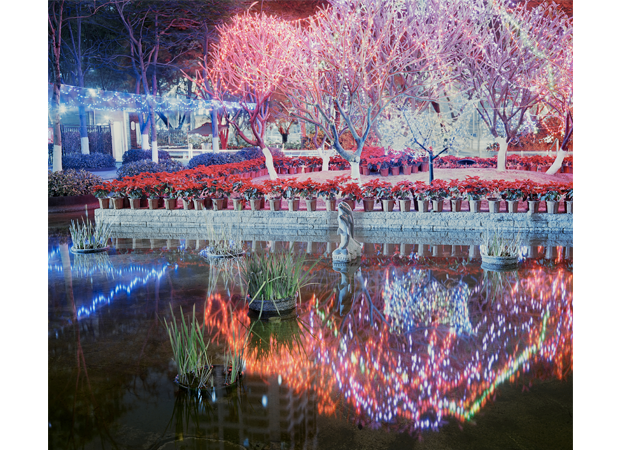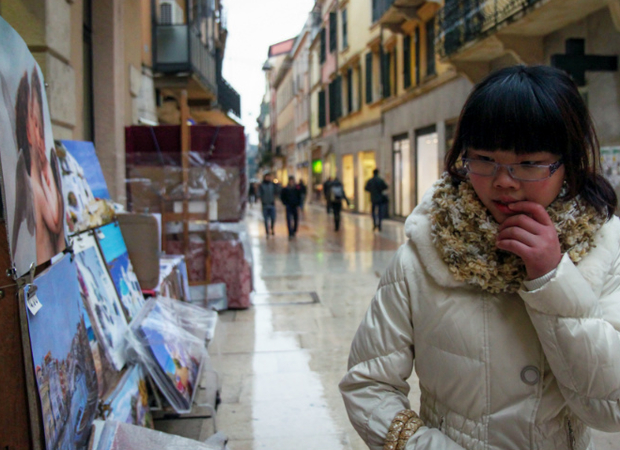Viewpoint
09.02.21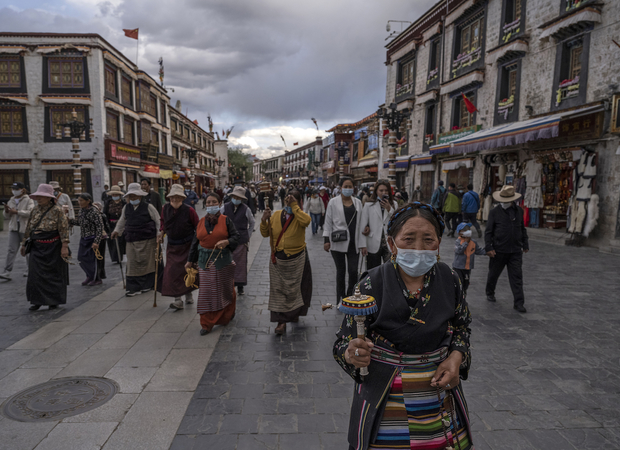
How Much Does Beijing Control the Ethnic Makeup of Tibet?
The idea of swamping, which the Dalai Lama himself elaborated in 2008, holds that China’s government has been seeking to solve its problems in Tibet and other “ethnic minority” areas such as Xinjiang by turning local indigenous ethnic groups (such...
Depth of Field
12.31.19
‘Nowhere to Dock’
from Yuanjin Photo
In 2019, Depth of Field showcased stories covering a range of topics: Shi Yangkun’s nostaglic exploration of China’s last collective villages, Zhu Lingyu’s careful and artisitic portrayal of survivors of sexual violence, and cities seen through the...
Depth of Field
02.20.18
When You Give a Kid a Camera
from Yuanjin Photo
This dispatch of photojournalism from China cuts across a broad spectrum of society, from film screenings in Beijing for the visually impaired to an acrobatics school 200 miles south, in Puyang, Henan province, and from children in rural Sichuan to...
ChinaFile Recommends
02.14.18Flu Fears Spread in China Ahead of Lunar New Year Holiday
Wall Street Journal
Chinese health authorities said the worst influenza season in recent years was straining the country’s resources and some experts warned that the Lunar New Year holiday, when hundreds of millions of Chinese go on the road, could make things worse.
ChinaFile Recommends
12.05.17Behind China’s Attempt to Ease the Rohingya Crisis
New York Times
Beijing strenuously avoids playing a high-profile part in ameliorating international humanitarian crises. Its most identifiable role in Myanmar had been to shield the local military from international criticism for carrying out what the United...
ChinaFile Recommends
12.01.17China’s Evicting Mentions of Its “Low-End” Migrants from Cyberspace
Quartz
First Beijing pushed thousands of migrant workers out of the city in the name of safety. Now authorities are carrying out a parallel virtual eviction as well, removing references to China’s “low-end population” from the internet.
The China Africa Project
10.09.17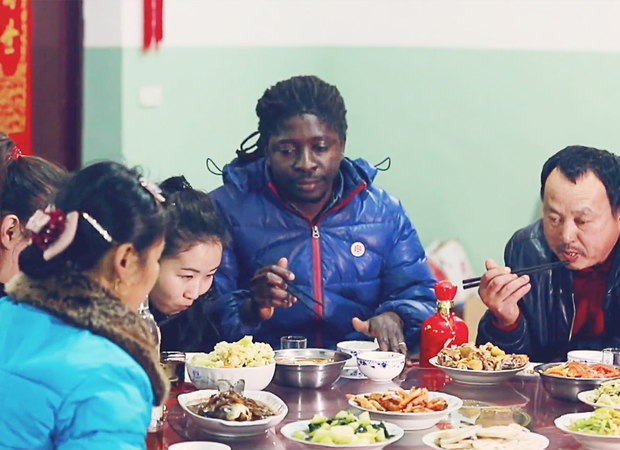
New Documentary Portrays Nuanced View of Africans’ Experience Living in China
When filmmakers Zhang Yong, Hodan Abdi, and Fu Dong set out to make a new documentary on the African migrant experience in China, they were determined to ensure that their own voices and experiences came through in the story. Until now, most if not...
Books
09.20.17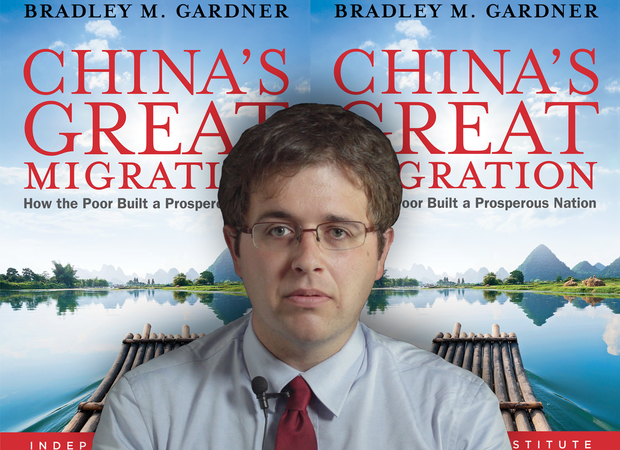
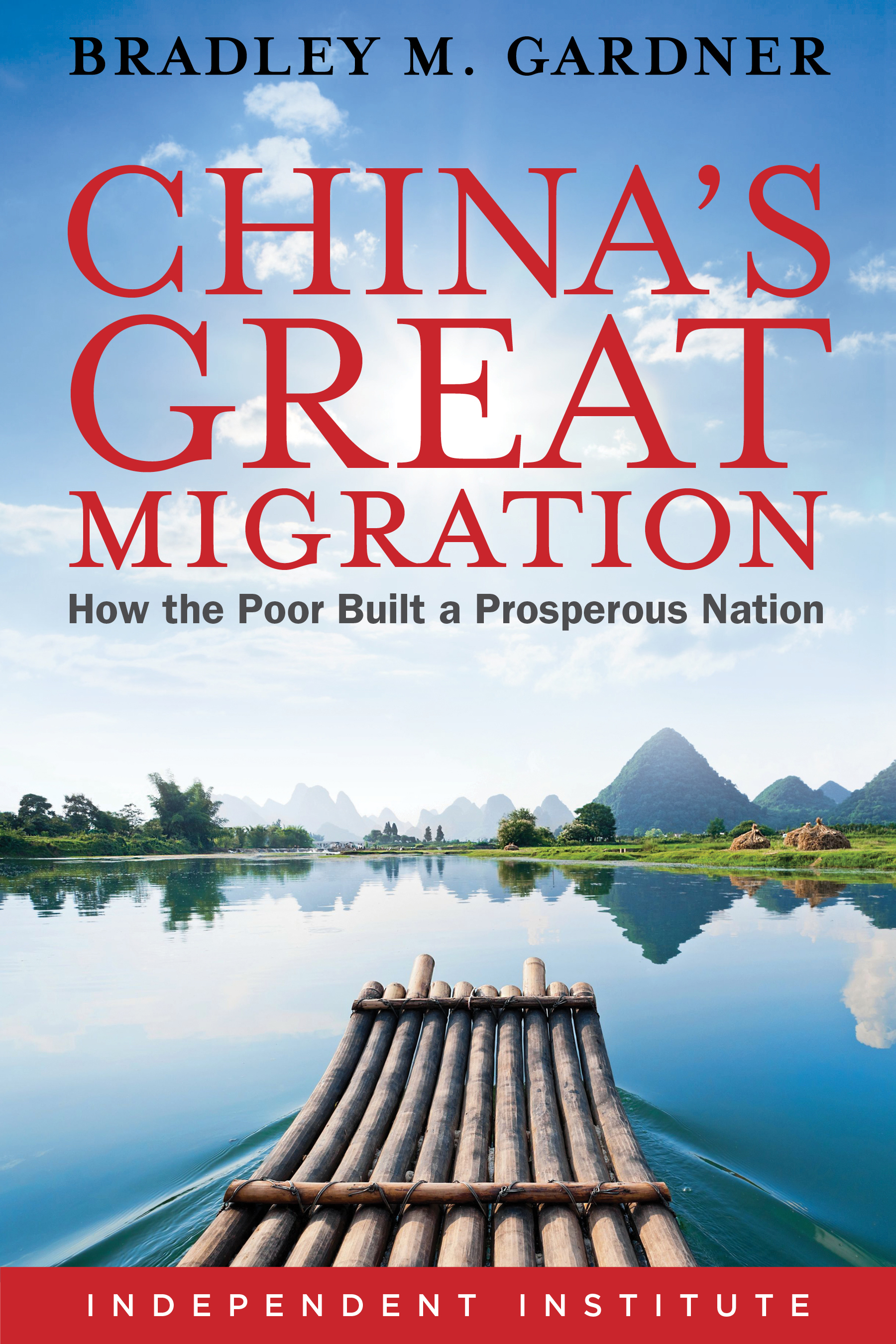
China’s Great Migration
China’s rise over the past several decades has lifted more than half of its population out of poverty and reshaped the global economy. What has caused this dramatic transformation? In China’s Great Migration: How the Poor Built a Prosperous Nation, author Bradley Gardner looks at one of the most important but least discussed forces pushing China’s economic development: the migration of more than 260 million people from their birthplaces to China’s most economically vibrant cities. By combining an analysis of China’s political economy with current scholarship on the role of migration in economic development, China’s Great Migration shows how the largest economic migration in the history of the world has led to a bottom-up transformation of China.Gardner draws from his experience as a researcher and journalist working in China to investigate why people chose to migrate and the social and political consequences of their decisions. In the aftermath of China’s Cultural Revolution, the collapse of totalitarian government control allowed millions of people to skirt migration restrictions and move to China’s growing cities, where they offered a massive pool of labor that propelled industrial development, foreign investment, and urbanization. Struggling to respond to the demands of these migrants, the Chinese government loosened its grip on the economy, strengthening property rights and allowing migrants to employ themselves and each other, spurring the Chinese economic miracle.More than simply a narrative of economic progress, China’s Great Migration tells the human story of China’s transformation, featuring interviews with the men and women whose way of life has been remade. In its pages, readers will learn about the rebirth of a country and millions of lives changed, hear what migration can tell us about the future of China, and discover what China’s development can teach the rest of the world about the role of market liberalization and economic migration in fighting poverty and creating prosperity. —Independent Institute{chop}
The China Africa Project
05.10.17
China Appears to be Losing Interest in Africa
Beijing-based investment attorney Kai Xue joins Eric and Cobus to discuss why he thinks Africa is no longer appealing to Chinese companies. Kai Xue is a longtime Sino-African affairs analyst and carefully monitors trade, foreign direct investment,...
The China Africa Project
01.10.17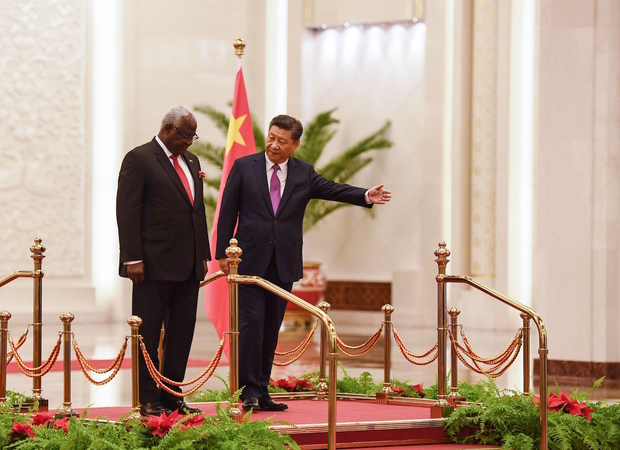
2016 China-Africa Year in Review
After years of relatively trouble-free development, 2016 marked a turning point in the China-Africa relationship, amid turbulent changes in the global economic and political order. China increased its deployment of combat troops to the continent,...
The China Africa Project
11.29.16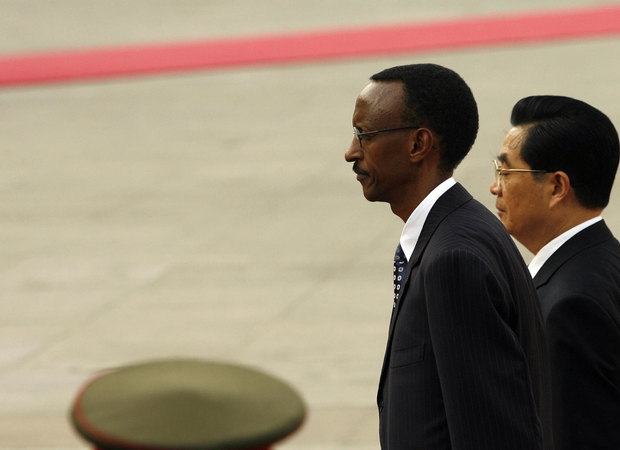
How Rwanda Attracts Chinese Money and Migrants Without the Lure of Natural Resources
Quartz’s Africa correspondent Lily Kuo recently returned from a reporting assignment to Rwanda where she discovered a very different side of China’s engagement in Africa. Rwanda lacks many of the resources and large markets that other African states...
The China Africa Project
09.27.16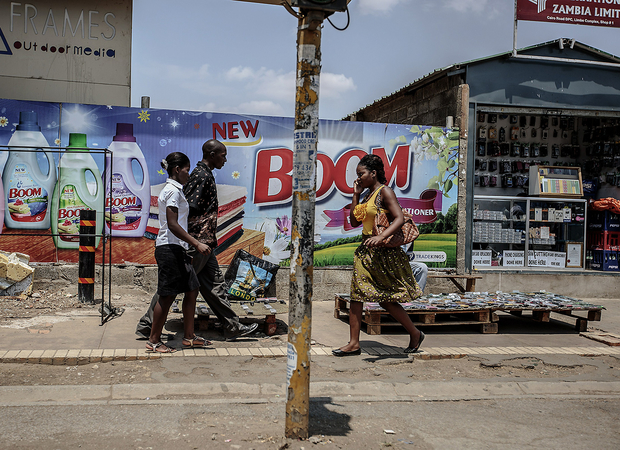
What Do Zambians Really Think of Chinese Immigrants?
For decades, Zambia had been the flash point of anti-Chinese sentiment in Africa. Late president and outspoken opposition leader Michael Sata was unrivaled in his seething criticisms of both China and the Chinese who had migrated to his country...
Features
04.22.16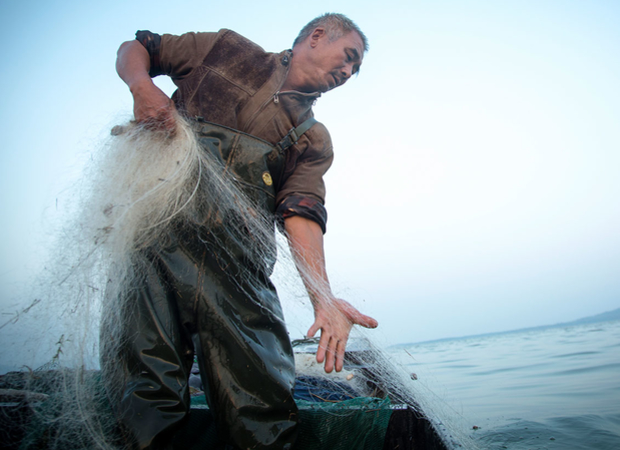
Drinking the Northwest Wind
Like so many of Mao’s pronouncements, it sounded simple. “The South has a lot of water; the North lacks water. So if it can be done, borrowing a little water and bringing it up might do the trick.” And thus, in 1952, the foundation was laid for what...
The China Africa Project
03.07.16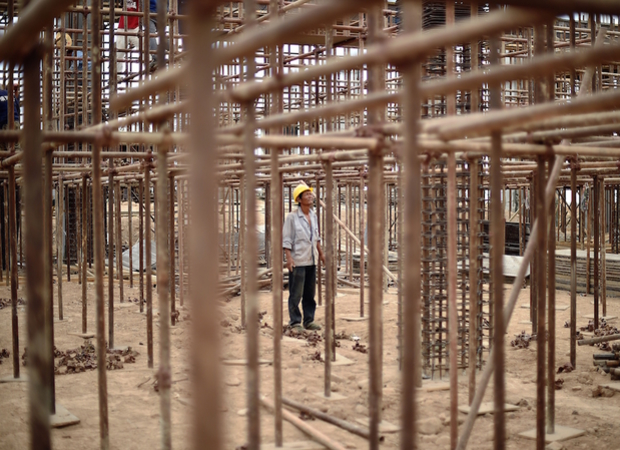
As Economy Worsens, Chinese Migrants in Africa Confront New Challenges
Thousands of Chinese migrants who settled in Africa over the past 10 years now face mounting uncertainty as economic growth slows across the continent and back home in China. While there are no reliable estimates as to how many Chinese migrants...
Books
02.23.16
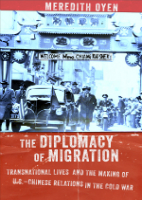
The Diplomacy of Migration
During the Cold War, both Chinese and American officials employed a wide range of migration policies and practices to pursue legitimacy, security, and prestige. They focused on allowing or restricting immigration, assigning refugee status, facilitating student exchanges, and enforcing deportations. The Diplomacy of Migration focuses on the role these practices played in the relationship between the United States and the Republic of China both before and after the move to Taiwan. Meredith Oyen identifies three patterns of migration diplomacy: migration legislation as a tool to achieve foreign policy goals, migrants as subjects of diplomacy and propaganda, and migration controls that shaped the Chinese American community.Using sources from diplomatic and governmental archives in the United States, the Republic of China on Taiwan, the People’s Republic of China, and the United Kingdom, Oyen applies a truly transnational perspective. The Diplomacy of Migration combines important innovations in the field of diplomatic history with new international trends in migration history to show that even though migration issues were often considered “low stakes” or “low risk” by foreign policy professionals concerned with Cold War politics and the nuclear age, they were neither “no risk” nor unimportant to larger goals. Instead, migration diplomacy became a means of facilitating other foreign policy priorities, even when doing so came at great cost for migrants themselves. —Cornell University Press{chop}Correction: Meredith Oyen’s employer was misidentified in an earlier version of this video. She is an Assistant Professor at the University of Maryland, Baltimore County.
ChinaFile Recommends
02.08.16Millions of Chinese Migrant Workers Head Home for New Year
Voice of America
Every year tens of millions of Chinese migrant workers head home in the largest annual mass migration of people.
Caixin Media
01.26.16
How Serial Killers Terrorized China’s Disorganized Elder Care Industry
The 45-year-old caregiver was calm on the witness stand, but her words were jarring. He Tiandai admitted during her murder trial that she killed a 70-year-old woman she cared for by poisoning her soup with sleeping pills and pesticide, injecting her...
ChinaFile Recommends
11.20.15The Strange Case of 77 Blue-Collar Chinese Migrants That Kenya Is Calling “Cyber-Hackers”
Quartz
Their arrests are emblematic of a slowly brewing backlash against Chinese immigration to Africa.
ChinaFile Recommends
11.04.15How Smartphones are Solving One of China’s Biggest Mysteries
Washington Post
For decades, China has been engaged in a building boom of a scale that is hard to wrap your mind around.
Caixin Media
10.20.15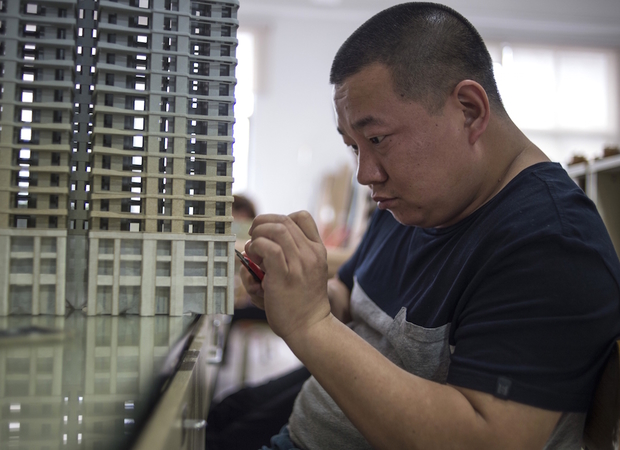
Moving 2 Million People for Beijing’s Urban Reset
Nearly 2 million Beijing residents will be moved to the city’s outlying districts from the center by 2020 as part of a massive urban revamp designed to better control people, traffic, and smog.The movers include up to 1 million government workers...
ChinaFile Recommends
10.15.15Ancient Teeth Found in China Challenge Modern Human Migration Theory
CNN
Scientists in southern China have discovered human teeth dating back at least 80,000 years.
ChinaFile Recommends
08.24.15What’s Scarier Than a Strong China? A Weak China.
Slate
When China actually does take a tumble, Americans feel it in their pocketbooks and portfolios.
ChinaFile Recommends
05.06.15Pool of Migrant Workers Expands Slower than in Past
Workers are also making more, National Bureau of Statistics says, and they are finding work closer to their rural homes.
Books
05.05.15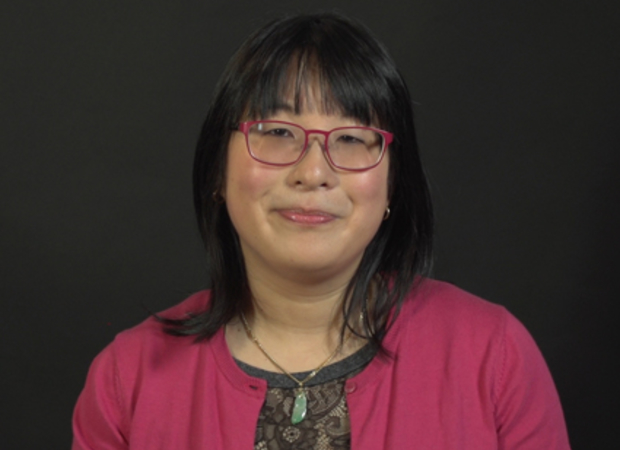

Meet Me in Venice
When Ye Pei dreamed of Venice as a girl, she imagined a magical floating city of canals and gondola rides. And she imagined her mother, successful in her new life and eager to embrace the daughter she had never forgotten. But when Ye Pei arrives in Italy, she learns her mother works on a farm far from the city. Her only connection, a mean-spirited Chinese auntie, puts Ye Pei to work in a small-town café. Rather than giving up and returning to China, a determined Ye Pei takes on a grueling schedule, resolving to save enough money to provide her family with a better future.{node, 15611}A groundbreaking work of journalism, Meet Me in Venice provides a personal, intimate account of Chinese individuals in the very act of migration. Suzanne Ma spent years in China and Europe to understand why Chinese people choose to immigrate to nations where they endure hardship, suspicion, manual labor, and separation from their loved ones. Today, all eyes are on China and its explosive economic growth. With the rise of the Chinese middle class, Chinese communities around the world are growing in size and prosperity, a development many westerners find unsettling and even threatening. Following Ye Pei’s undaunted path, this inspiring book is an engrossing read for those eager to understand contemporary China and the enormous impact of Chinese emigrants around the world. —Rowman & Littlefield{chop}
The China Africa Project
04.03.15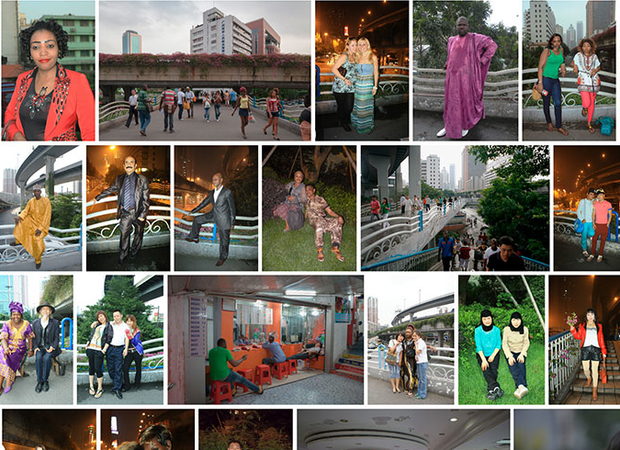
This Little Bridge Connects Guangzhou and Africa
The southern Chinese city of Guangzhou is home to China’s largest African migrant population, predominantly from Nigeria. In the city’s Little North Road neighborhood there is a small pedestrian bridge where immigrants from all over the world go to...
ChinaFile Recommends
02.25.1539 Hours Inside The Biggest Human Migration On Earth
Huffington Post
China’s Thanksgiving, Christmas and New Year’s rolled into one, the holiday unfolds on an entirely different scale.
ChinaFile Recommends
02.25.15Traffic Peaks as Lunar New Year Holiday Ends
Xinhua
The last day of the holiday saw about 9.7 million train trips, 1.4 million by plane, and 73.6 million by highway.
Infographics
02.03.15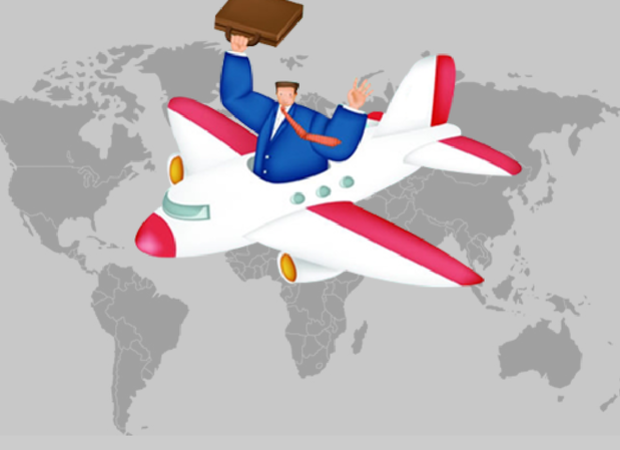
Wealthy Chinese Are Fleeing the Country Like Mad
from Sohu
Last year, Chinese millionaires maxed out the quota for EB-5 visas under the U.S.’s Immigrant Investor Program, and recently it was reported that 90% of Australia’s Significant Investor visas were given to Chinese nationals. All over the world,...
The China Africa Project
12.18.14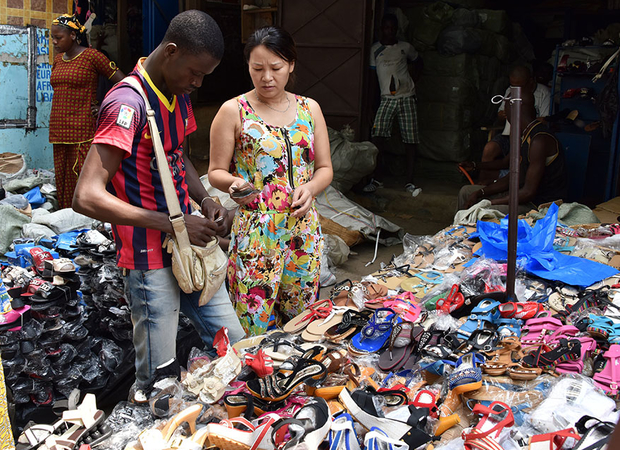
Who Are the Chinese in Africa?
Some say the number of Chinese in Africa now exceeds one million people; some even go as high as two million. Although no one has a precise accounting of just how many Chinese migrants now live on the continent, there is no doubt their numbers are...
Video
12.15.14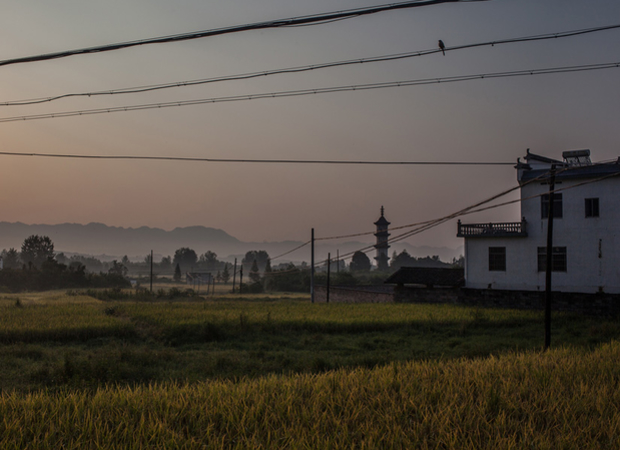
Down to the Countryside
The world has heard much of late about the scale and scope of China’s mass migration from the poor rural countryside to its booming cities. Some think the number of these migrant workers will soon reach some 400 million souls. They have created...
The China Africa Project
11.28.14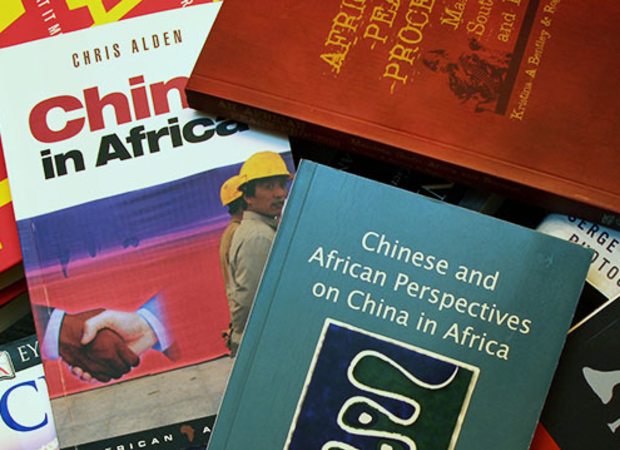
A Career in China-Africa Research
Dr. Yoon Jung Park is among the most well-known Sino-Africa scholars in the field. Park has taught and done research on China-African affairs for over 20 years at universities in both the U.S. and Africa. Now based in Washington, D.C., where she co-...
ChinaFile Recommends
10.12.14Once a Symbol of Power, Farming Now an Economic Drag in China
New York Times
Frustrated by how little they earn, the ablest farmers have migrated to cities, hollowing out this rural district in the Chinese heartland.
The NYRB China Archive
09.08.14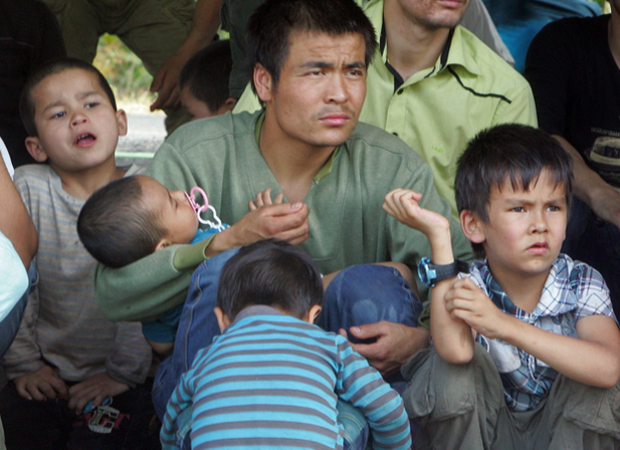
From China to Jihad?
from New York Review of Books
It’s a very long way from China’s arid Xinjiang Uighur Autonomous Region in the country’s far northwest to its semi-tropical borders with Vietnam, Laos, and Burma in the south, and then it’s another precarious distance from there, down rivers and...
The China Africa Project
07.28.14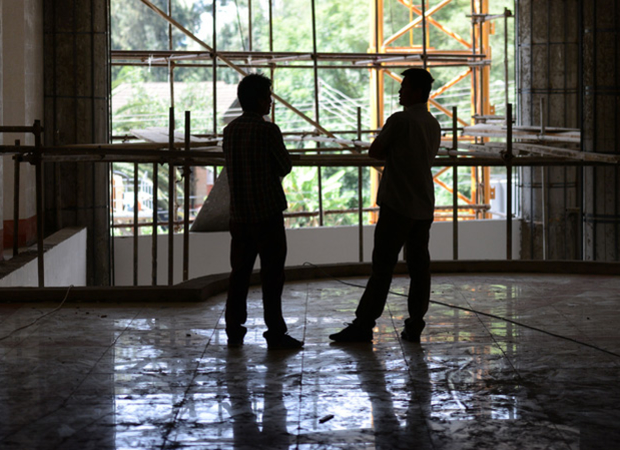
The Chinese-African Honeymoon is Over
There is a growing sense among Africans and Chinese alike that their once heady romance is now entering a new, more pragmatic phase. Across Africa, people and politicians are becoming visibly more concerned about the surging trade deficits, massive...
Infographics
05.15.14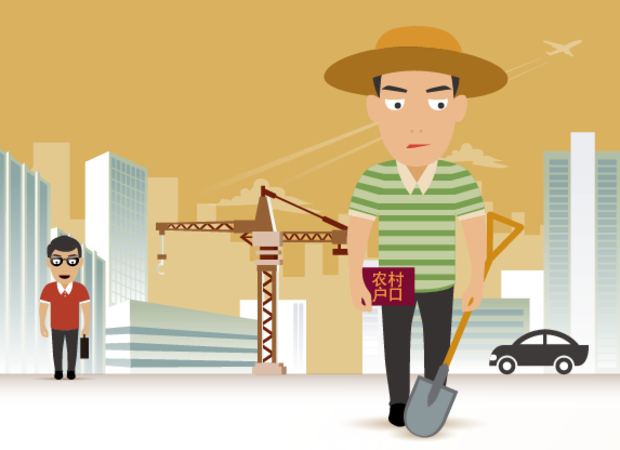
China’s Fake Urbanization
from Sohu
This infographic explains why it is so hard for rural migrants to settle permanently in cities. For starters, city dwellers were the first to get rich after Reform and Opening Up, which created a large income disparity between them and people living...
ChinaFile Recommends
01.27.14Map Visualizes Chinese New Year Migration
Wall Street Journal
An estimated 3.65 billion trips will be made during the world’s largest seasonal migration.
Media
01.03.14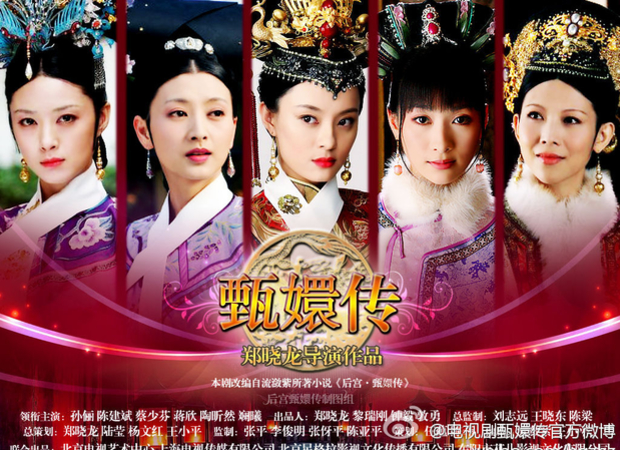
Coming to Chinese Headlines in 2014
Chinese people have spent another year breathing dirty air, fretting about food safety, poking fun at corrupt officials, and complaining about tightening censorship—but as a discerning consumer of international news, you probably knew that already...
Postcard
08.08.13
Portraits of the Faceless
Nine years ago, photographer Katharina Hesse began to make portraits of North Korean defectors. To protect their identities she asked only that they “give something” of themselves to the photographs. Her subjects bury their faces in their hands, or...
Books
07.31.13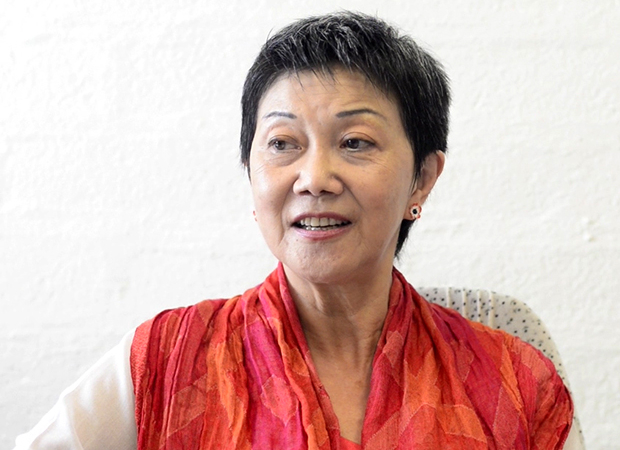
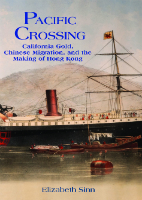
Pacific Crossing
During the nineteenth century, tens of thousands of Chinese men and women crossed the Pacific to work, trade, and settle in California. Drawn by the gold rush, they brought with them skills and goods and a view of the world that, though still Chinese, was transformed by their long journeys back and forth. They in turn transformed Hong Kong, their main point of embarkation, from a struggling, infant colony into a prosperous, international port and the cultural center of a far-ranging Chinese diaspora.Making use of extensive research in archives around the world, Pacific Crossing charts the rise of Chinese Gold Mountain firms engaged in all kinds of trans-Pacific trade, especially the lucrative export of prepared opium and other luxury goods. Challenging the traditional view that this migration was primarily a “coolie trade,” Elizabeth Sinn uncovers leadership and agency among the many Chinese who made the crossing. In presenting Hong Kong as an “in-between place” of repeated journeys and continuous movement, Sinn also offers a fresh view of the British colony and a new paradigm for migration studies. —Hong Kong University Press {chop}
ChinaFile Recommends
07.30.13China Urbanization Cost Could Top $106 Billion a Year
Reuters
The figure is based on the assumption that 25 million people a year settle in cities, with the government spending the money on making sure they enjoy the same benefits in healthcare, housing and schools that city residents have, the Chinese Academy...
ChinaFile Recommends
06.18.13China’s Great Uprooting: Moving 250 Million Into Cities
New York Times
The ultimate goal of the government’s modernization plan is to fully integrate 70 percent of the country’s population, or roughly 900 million people, into city living by 2025. Currently, only half that number are. &...
Books
06.04.13
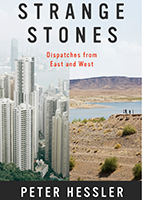
Strange Stones
During the past decade, Peter Hessler has persistently illuminated worlds both foreign and familiar—ranging from China, where he served as The New Yorker’s correspondent from 2000 to 2007, to southwestern Colorado, where he lived for four years. Strange Stones is an engaging, thought-provoking collection of Hessler’s best pieces, showcasing his range as a storyteller and his gift for writing as both native and knowledgeable outsider. From a taste test between two rat restaurants in South China to a profile of Yao Ming to the moving story of a small-town pharmacist, these pieces are bound by subtle but meaningful ideas: the strength of local traditions, the surprising overlap between cultures, and the powerful lessons drawn from individuals who straddle different worlds.Full of unforgettable figures and an unrelenting spirit of adventure, Strange Stones is a dazzling display of the powerful storytelling, shrewd cultural insight, and warm sense of humor that are the trademarks of Peter Hessler’s work. —Harper Collins{node, 3320, 4}
Environment
05.17.13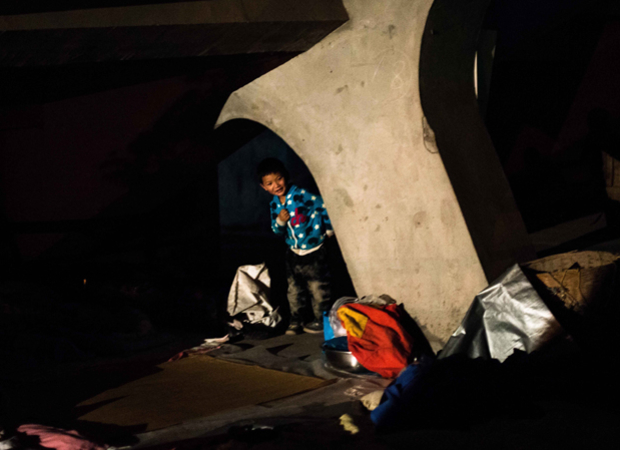
China Tops Table for Disaster-Induced Displacement of People
from chinadialogue
More than a third of all people forced from their homes by disasters such as floods, storms, and earthquakes in the past five years were in China, says a new report from the leading international body on displacement.Around 49.8 million Chinese...
Excerpts
04.05.13Living Underground
They are called rats, and they have become a symbol of Beijing’s red-hot real estate market. Because of soaring housing costs, there are at least a million people living underground, only able to afford a rented room in the basements of skyscrapers...
Sinica Podcast
01.18.13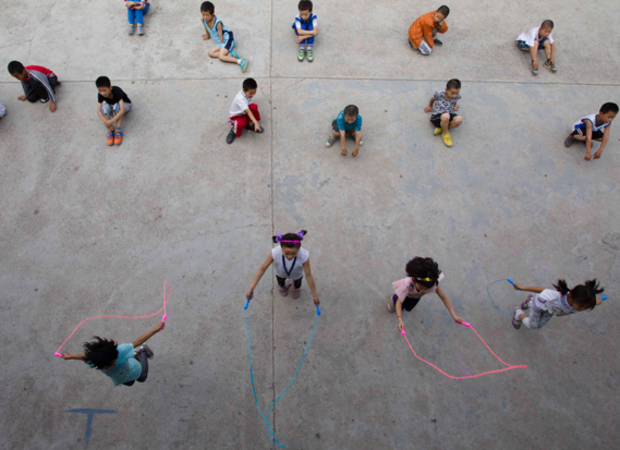
China’s Urban Billion
from Sinica Podcast
Lurking silently behind practically every story on Chinese economic growth over the last thirty years has been the country’s unprecedented shift from being an overwhelmingly rural society to what is now a largely urban one, with almost 700 million...
ChinaFile Recommends
12.03.12Decline of Primary Schools in Rural China: Causes and Consequences
China Policy Institute Blog
“Half of rural primary schools have disappeared between 2000 and 2010 and such a trend is still an ongoing process”, says Twenty-first Century Education Research Institution, a NGO based in Beijing. The rapid decline of primary schools in rural...
ChinaFile Recommends
10.02.12The End of the Great Migration
Marketplace
China’s great migration started with farmers boarding crowded trains in Sichuan, Henan, and Hubei - poor provinces in China’s interior. A day or two later, they arrived here, along the Pearl River Delta, just north of Hong Kong, and became factory...
ChinaFile Recommends
09.14.12TED Talk: The Voices of Chinese Workers
TEDTalks
n the ongoing debate about globalization, what’s been missing is the voices of workers — the millions of people who migrate to factories in China and other emerging countries to make goods sold all over the world. Reporter Leslie T. Chang...
Books
06.12.12
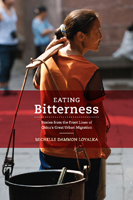
Eating Bitterness
Every year over 200 million peasants flock to China’s urban centers, providing a profusion of cheap labor that helps fuel the country’s staggering economic growth. Award-winning journalist Michelle Dammon Loyalka follows the trials and triumphs of eight such migrants—including a vegetable vendor, an itinerant knife sharpener, a free-spirited recycler, and a cash-strapped mother—offering an inside look at the pain, self-sacrifice, and uncertainty underlying China’s dramatic national transformation. At the heart of the book lies each person’s ability to “eat bitterness”—a term that roughly means to endure hardships, overcome difficulties, and forge ahead. These stories illustrate why China continues to advance, even as the rest of the world remains embroiled in financial turmoil. At the same time, Eating Bitterness demonstrates how dealing with the issues facing this class of people constitutes China’s most pressing domestic challenge. —University of California Press{chop}
Reports
12.01.10
Can China’s Rural Elderly Count on Support from Adult Children? Implications of Rural to Urban Migration
World Bank
Support from the family continues to be an important source of support for the rural elderly, particularly the rural elderly over seventy years of age. Decline in likelihood of co-residence with, or in close proximity to, adult children raises the...
The NYRB China Archive
02.26.09The China We Don’t Know
from New York Review of Books
In the late 1990s, Chinese peasants in the village of Da Fo, many of whom between 1959 and 1961 had survived the twentieth century’s greatest famine, felt free enough to install shrines to Guangong, the traditional war god of resistance to...
Reports
03.01.07
Internal Migrants: Discrimination and Abuse
Amnesty International
Numbering just two million in the 1980s China’s internal migrants are now part of the largest peacetime migration in history, with some experts estimating their numbers to swell to 300 million by 2015. While they have served as laborers fueling...




